Guipure: features, varieties and applications of fabric
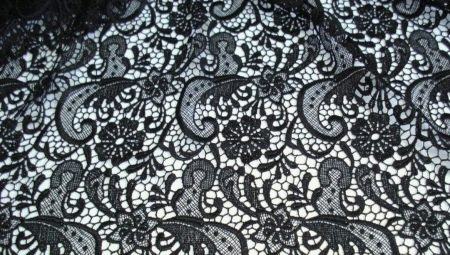
Weaving lace has been famous since ancient times as an applied art. Back in the 16th century, the world saw Venetian lace, crocheted by hand, with volumetric patterns, drawings of floral ornaments, animals, religious and fantasy themes. This marked the beginning of weaving guipure. Only capable and wealthy people could afford it, since the work was very expensive and time-consuming.
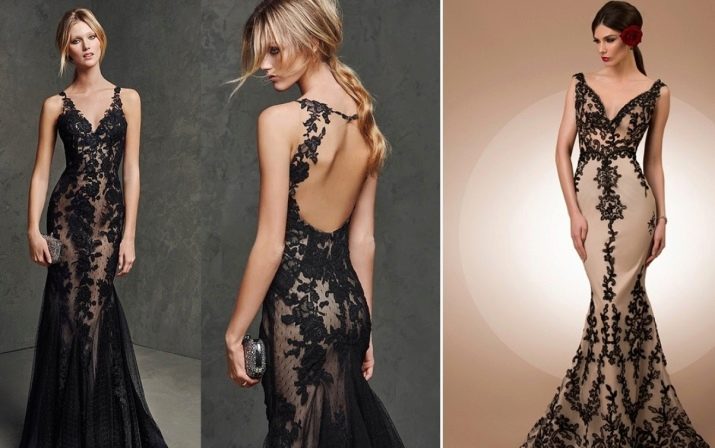
What it is?
Guipure is an openwork fabric that includes a mesh base and fragments of a pattern. Depending on the technique of execution, embroidery on light, transparent fabric is possible. The material is thin, quite durable, wear-resistant, breathable. Its elasticity depends on the number of episodes and decorations applied to the base material. The range of colors and toning of fabric abounds in variety: from plain dyed to colored. For elegant dresses, blouses, skirts, made of thin and transparent material, covers made of silk, satin, cambric, chiffon and other bases are substituted for ease of use.


Composition
The most expensive, high-quality versions of guipure fabric are made from the finest cotton, viscose, silk threads. To add shine, lurex is introduced into the composition, for elasticity and convenience - a stretching lycra thread. In modern production, you can often see canvas made of acrylic, elastane, polyester, along with classic natural ones.
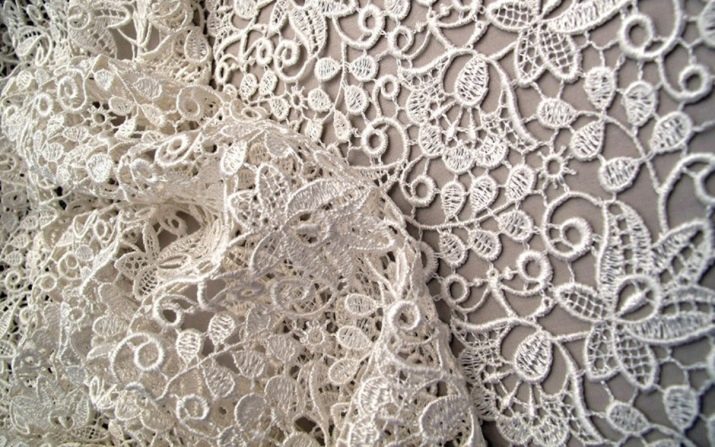
Types of material
Guipure is divided into types: mesh, knitted, stretch, classic, stretch guipure, metallic, wedding, macrame.
The ancestor of exquisite fabric was Venetian guipure. It is characterized by intricate patterns made with high quality threads, gold and silver.
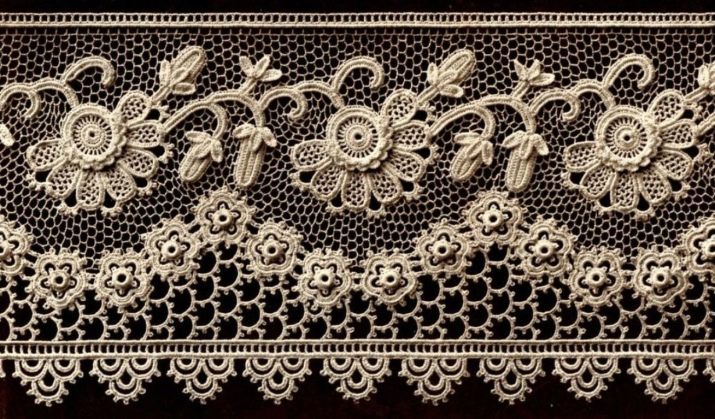
During the period of the industrial method of production, synthetic thread was added to the lace fabric, which made the products practical and durable. Stretch guipure allows you to sew non-standard images, because it has the ability to stretch well, fit perfectly on the figure.
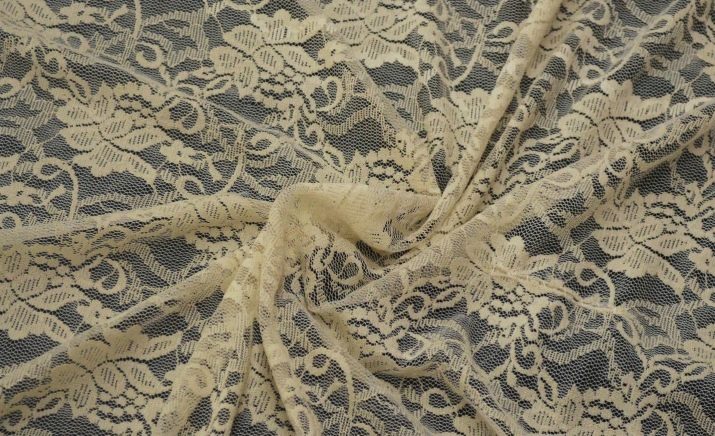
Guipure with lurex (a thread with a metal coating) gives a festive look to evening dresses. Shiny blotches can stiffen the canvas.
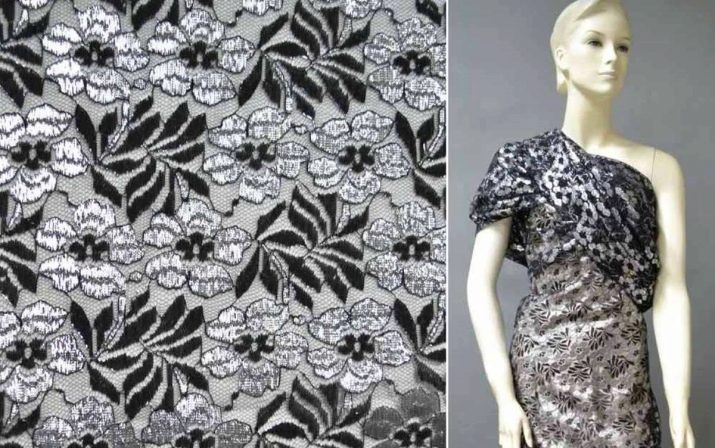
New technologies offer us a combination of knitwear and lace.
This is very convenient, since a product made of such fabric does not require an addition in the form of a cover or lining, it makes it possible to create styles with various fashionable elements. The combination of white guipure on a black knitted base looks great.
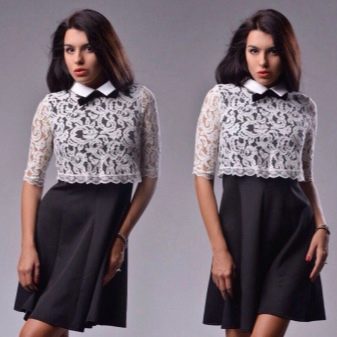

Guipure atlas is a new kind of elastic two-layer fabric, it consists of stretch satin and guipure. More intended for sewing wedding and evening dresses, does not wrinkle, does not shine through and keeps its shape. On the front side, a pattern is applied to the satin with very thin threads. It is often complemented with rhinestones, sequins or beads.
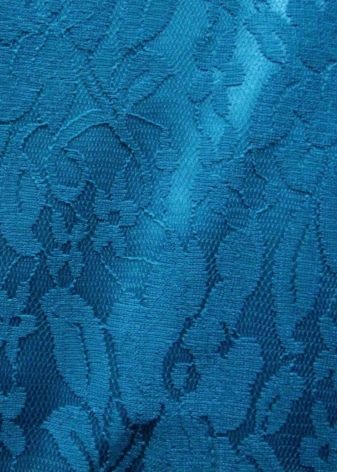
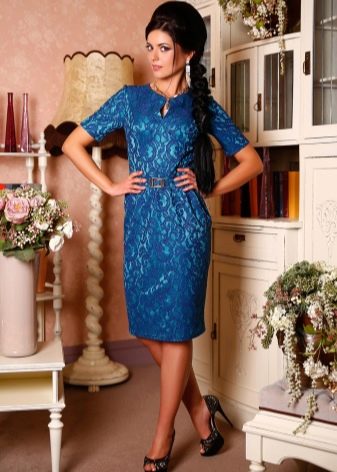
Printed guipure is named after the patterning technology. Usually this is a combination of several colors.
A kind of canvas is used for both everyday and ceremonial outfits.
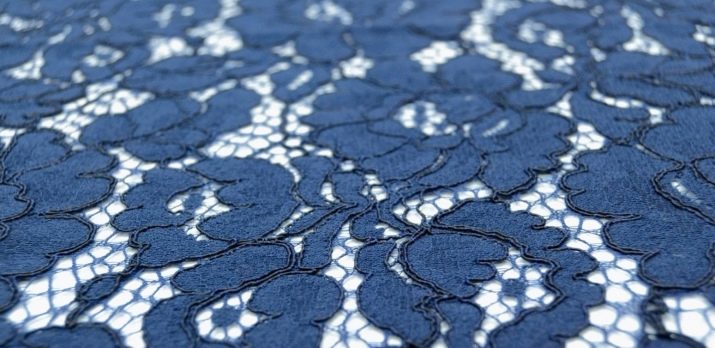
Macrame guipure is a delicate weaving of high quality threads. Clothes made from such fabric look expensive and elegant. The type of guipure is popular in details, additions, finishes and even in interior decor.
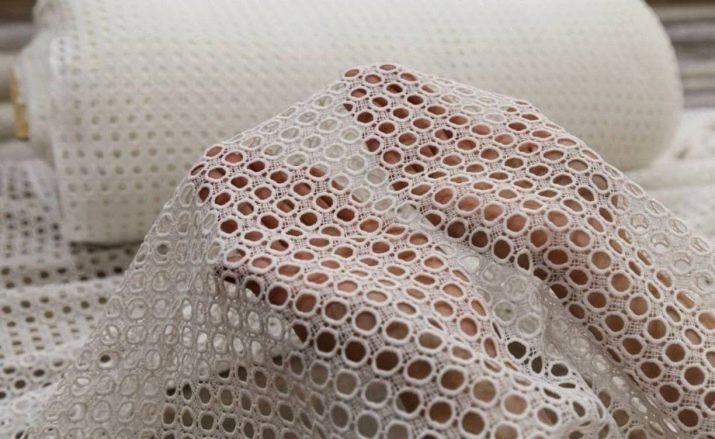
It is difficult to imagine tailoring a wedding dress without a mesh fabric with three-dimensional embroidery, beads and beads. The bride's dress from this looks elegant, expensive, and the lace edges and hem emphasize her femininity and beauty.
Guipure fabrics abound in a variety of patterns, shades, types, techniques of their production. In sets, they are in perfect harmony with other textures.

Advantages and disadvantages
It is difficult to disagree with the tenderness and beauty of guipure. Most often, the canvas can be seen in products for evening and special occasions, its transparency, sophistication, lurex shine adds sophistication and charm to the image. Business style with small inclusions of openwork fabric becomes softer and lighter.
The material is simple to care for and wear, but due to the mesh structure, you need to pay attention to the holds and the appearance of puffs.
One of the disadvantages is the high cost of handmade fabric., since this is a complex and lengthy process to perform. Types with the inclusion of synthetic threads and produced on industrial equipment are cheaper and more affordable.
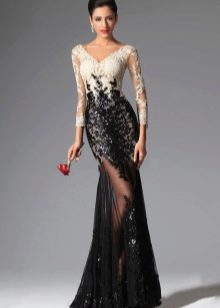
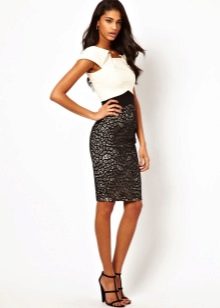
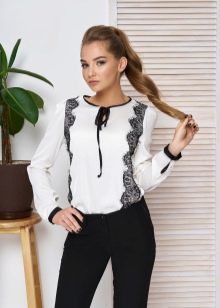
What are the differences from lace?
Lace and guipure are often compared to each other. Lace is obtained by knitting with special thread attachments. It is mainly used as a decoration element. Nowadays, openwork is also created by machine, as it is faster. Lace requires careful maintenance.
Guipure is a ready-to-use fabric, it has a mesh, almost always elastic, base on which various fragments of the pattern are stuffed or embroidered, and is easy to use. Both techniques are elegant and sophisticated.
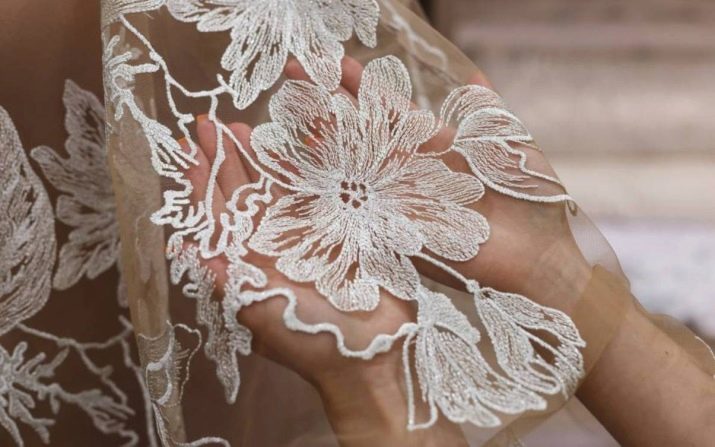
Application
Guipure is a popular, sought-after fabric used alone or in combination with other materials.
Evening dresses have a delicate, sophisticated look, feminine. The canvas is perfect for a wedding dress and pleasant additions to the bride in the form of a veil, veil, gloves, framing a bouquet or a hat.
Guipure fabric works well with other fabrics. Restrained and austere business bow can be refreshed with decorative inserts, and use in shoes or accessories will emphasize their beauty.
Often, openwork fabrics are used in the interior in the form of curtains, tulle, curtains, pillowcases on decorative pillows, in table textiles.Tablecloths and bedspreads will maintain a cozy atmosphere in the house, and chandeliers, floor lamps, sconces with the lighting on will throw magic patterns on the walls.

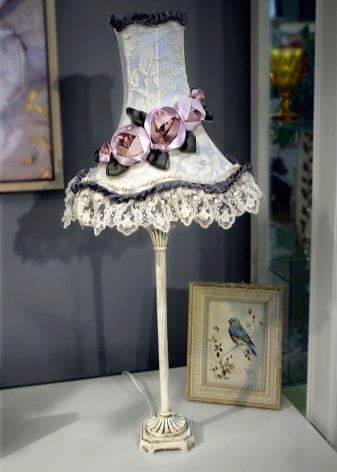
Fabric care
In order to preserve the appearance of guipure products longer, it is necessary to use hand wash at a water temperature of up to forty degrees or machine wash in the "delicate" mode without spinning with mild detergents. It is recommended to iron natural fabrics with a moisturizer and from the inside out, on a soft base to maintain the volume of the pattern, and the temperature depends on the percentage of synthetic fibers.
But you can also use dry cleaning services. Thin, delicate fabric will last a long time if we adhere to certain rules for caring for it.
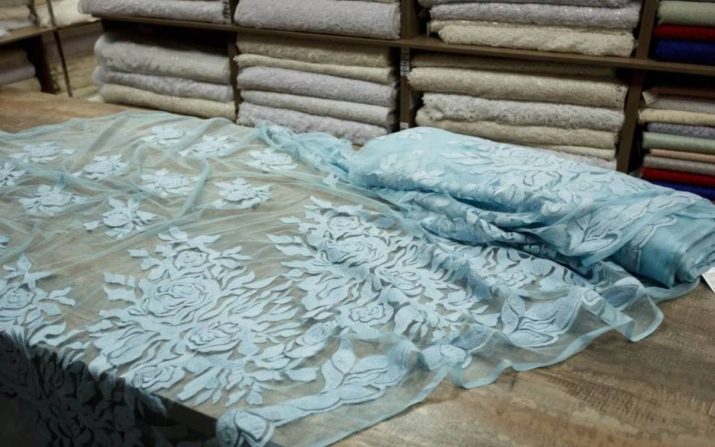
You will learn more about guipure by watching the following video.








